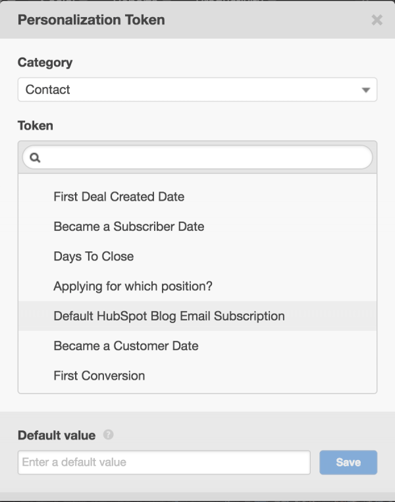
As your marketing efforts become more complex, they can also become more time-consuming. One of the reasons some organizations remain loyal to an ineffective sales approach is because making the leap to an inbound marketing, account-based marketing, and agile marketing methodologies takes investment, thoughtfulness, and learning through experience. Even once this new process is set up, it will require refinement over time to ensure it works optimally.

Evaluating which marketing tactics and investments help to make your team more effective is a vital part of the process. No one wants to feel that they are wasting time on activities and channels that don’t help grow the business, or worse yet, stuck performing futile tasks because management has yet to recognize the inefficiency they see daily. We see these “stick fetching” activities all the time when we audit the marketing practices of companies--yet they persist.
Though every organization must develop a distinct set of account-based marketing activities that help to keep the pipeline full of leads, these seven are some of the most likely to be part of your process. Regardless of organization size and structure, these processes can help streamline the workload of both sales and marketing.
With prospects constantly growing and evolving, research is an ongoing process that can take up a large chunk of time, unless you develop an agile process to learn more about the companies you are targeting. Some of the best ways to streamline your research include:
High-value offers are more compelling than offers of general consultations and bland appointment setting. Create offers that help educate buyers about how to resolve acute pain points relative to their industry, role, and specific line of business. Offers that promise to show how other companies in the same field are achieving their goals or reveal processes used by well known, successful companies can be especially effective (Rosenberg).


95% of buyers chose a vendor that provided content to navigate each stage of the buying process
(Demand Gen Report) See more Sales Stats
Create content that spans the entire buyer's journey from the early stages of learning about what you offer to decide to convert. Educate them about the specific value you can provide, outcomes you can ensure, pain points you can solve, and how you can help them overcome the obstacles that they face.

This point is crucial. We see this mistake way too often.

Filling your sales pipeline with leads is just the beginning. Leads must be educated, nurtured, inspired, and motivated. Instead of trying to close a deal each time you appear in front of a prospect, offer them more knowledge and deeper reasons to do business with your company. This will help move them to the next stage of the buyer’s journey. Use your buyer research from point one to create a messaging and engagement framework. Shift your approach to focus on the motivations of your buyers -- not your overt need to sell. This will lend more importance to what you are sharing and align better with the buyer's perspective.
Account-based marketing is all about casting a wide net to try and attract a diverse range of prospects. Some of the tactics that should be part of your arsenal include:
Use dynamic personalization to make your website specific and relevant to the types of accounts you wish to attract.

Personalization isn’t limited to including a prospect’s name in content (which isn't always useful), it can also mean offering them content on companies related to their industry, reporting on what influencers in the space are doing and pieces that speak to their specific pain points. Similar to email, your website can be personalized with relevant content based on an array of factors such as segmentation lists, lifecycle stage, persona, industry, and even role/title.

Your marketing and sales team must be committed to gains and not blame. They must help each other--not point fingers. It's a joint effort of combined skill and talent. Figuring out how sales and marketing align helps to provide the structure behind every campaign (Devaney), which results in a smoother handoff of qualified prospects.
Identifying the activities that lead to success in account-based marketing and refining them can take time, but with proper planning and tracking, you can begin to denote the ones that are truly vital to your unique process and those that aren’t worth the time investment. Plus, if marketing and sales teams have aligned goals and a process designed to build mutual support (rather than a contest between the groups) the business will benefit. Even marketing and sales SLAs should be tested, designed for alignment, and tweaked over time to foster creativity, accountability, and positive energy.
Further reading on the subject: What to Do With Purchased Lead Lists in Your Inbound Marketing Strategy
Works Cited
Devaney, Erik. 5 Account-Based Marketing Experts Share Their Most Successful Campaigns. 26 April 2017.
Rosenberg, Craig. Account-based marketing: 11 Tactics to Drive Your ABM Process. n.d. <http://blog.topohq.com/account-based-marketing-11-tactics-to-drive-your-abm-process/>.
Zantal-Wiener, Amanda. The Ultimate Guide to Account-Based Marketing: 6 Key Steps. n.d. <https://blog.hubspot.com/marketing/account-based-marketing-guide>.
by Jonathan Franchell, CEO of Ironpaper - For more tips and hacks: Need to remove a new line after h1 tags? Both web designers and SEO practitioners need to employ headline tags: H1, H2, H3 in several ways to improve web page structure and tag...

The marketing industry is transforming significantly due to generative AI and increasing market complexity. Gartner's prediction of a 25% decline in traditional search traffic suggests that the era of search engines is dying. AI tools, particularly...

The Crowded Arena of the IT Marketplace Updated December 2024 The Information Technology (IT) landscape is experiencing rapid growth and intensifying competition. IT spending is projected to reach nearly 5.1 trillion U.S. dollars in 2024, a...

Updated December, 2024 The field of digital marketing is evolving rapidly in response to new technology and changing buyer expectations. To help career-minded marketers, we’ve rounded up the top 10 skills needed to succeed in the field. These are...
